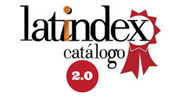Universal System of multilingual digital translation that incorporates technology for people with visual or hearing disabilities
Keywords:
Disabilities; multilingual translator; technology and industry; universal accessibilityAbstract
This article proposes and structures the basis for the creation of a digital translator that includes voice, text, sign language, Braille and associated technologies. The elements from which this combination of analog-digital systems is realized are customized due to the multiple variables that must be considered in the face of human realities. The objective is to overcome the existing language and universal design barriers of digital translators. The methodology is deductive since the implications are based on algorithms executed on the Internet for industrial and utility models that seek to incorporate new technologies in products and services. The digital environment is characterized by a complex network of complementary and multi-content platforms that must be designed with systems adapted for people with different capabilities. This study is a unique theoretical basis that integrates virtual and augmented reality communication models.








